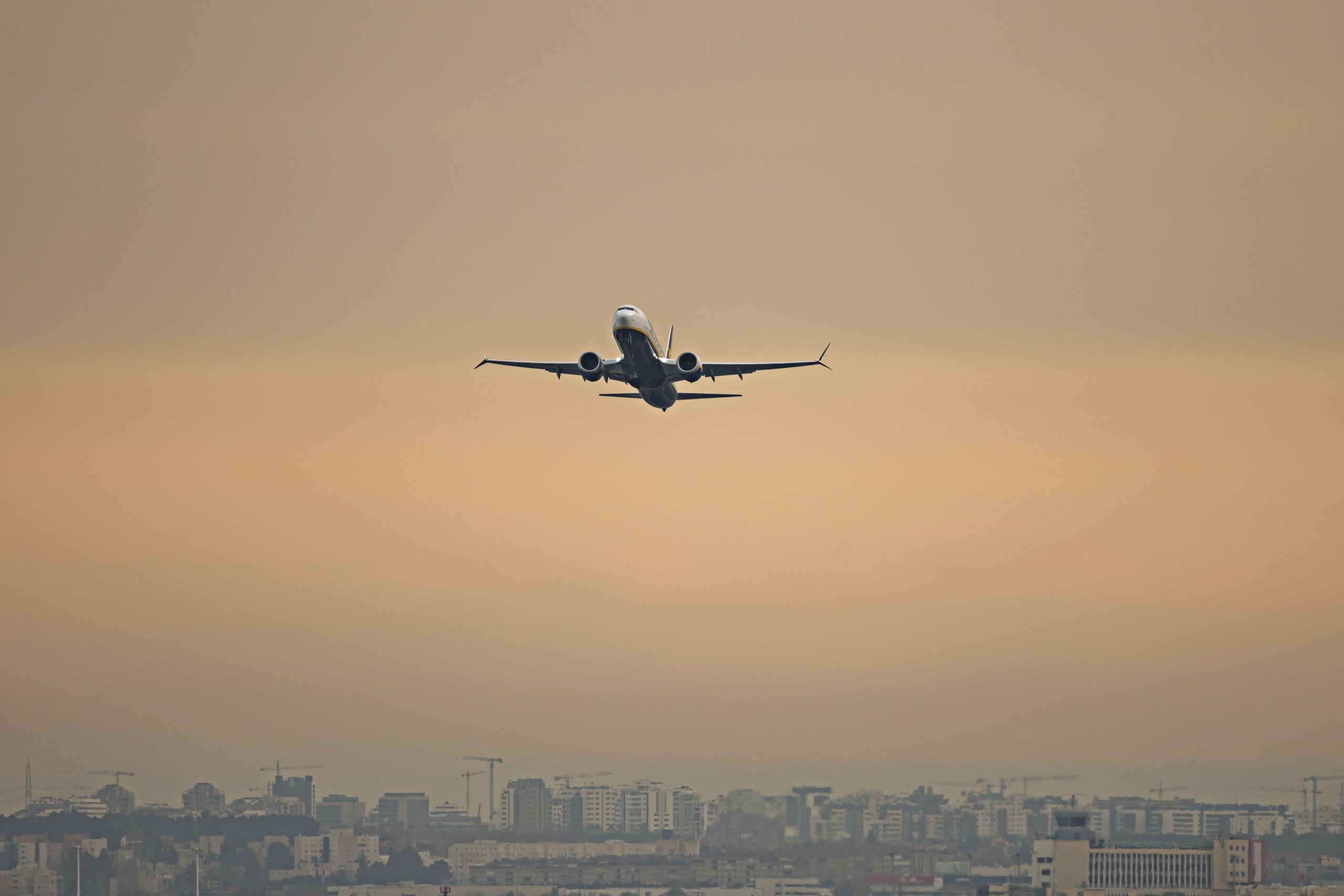This week, a Singapore Airlines flight experienced severe turbulence, in which one person – who had a heart condition – died, and a number of others were injured. This was only the latest in a series of incidents that have focussed attention on increased air turbulence and its possible link to climate change.
On May 1, 2022, a SpiceJet flight from Mumbai to Kolkata in India experienced similar turbulence, leaving numerous people injured. Months later, one of the passengers died as a result of injuries sustained on that flight.
Hemal Doshi, who was aboard the SpiceJet flight, recalled the harrowing experience, “A sudden jolt threw everyone into a panic. I held onto an elderly woman seated next to me to prevent her from falling off her seat.”
Similarly, on 11 June 2022, an Air Blue flight from Pakistan’s commercial capital of Karachi to Peshawar also encountered unexpected turbulence, sending passengers into a state of terror. Amid the chaos, passengers prayed and held on to each other, said passenger Nasreen Pasha.
“Everything was just fine as we were enjoying the smooth flight and hospitality. But all of a sudden, the flight turned rough and bumpy, shaking incessantly,” Pasha said.
The science and effects of air turbulence
According to Islamabad-based scientist Mohammad Umer Alvi, human-induced environmental degradation is a factor behind unsafe skies. “With the rise in average temperatures and deforestation, the atmosphere in and around big cities in the country has become more unstable. [This] leads to the formation of convective currents that result in unpredictable air turbulence, especially around big airports such as in Karachi and Lahore,” said Alvi.
A global study, whose results were published in 2019 by the Department of Meteorology at the University of Reading had already highlighted the impact of climate change in exacerbating clear-air turbulence (CAT). This type of severe turbulence occurs in cloudless regions and causes violent oscillation of aircraft, but because of a lack of clouds, it is hard to predict.
The study also noted that warmer air caused by carbon dioxide emissions increases wind shear in the jet streams, strengthening clear air turbulence globally. As a consequence, turbulence is rising over busy airspaces like the North Atlantic, where the annual duration of severe turbulence had increased by 55% from 1979 to 2020.
Sarfaraz Khan, a senior official at the Pakistan Meteorological Department said, “The forecast [for air turbulence] is made on the basis of upper atmosphere [85 km to 600 km above sea level] wind data that you get from an instrument called a radiosonde, which is released with a 100 gm balloon in the atmosphere. Usually a jet stream, with very strong winds at a level above 30,000 ft, causes turbulence.”
Jayanarayana Kuttippurath, a climate expert and atmospheric chemist from IIT Kharagpur
If warming becomes intense in the future, the number of clear air turbulence events will rise significantly
He added, “The problem with [clear-air] turbulence is that it’s just moving air. And air is transparent to ultra high frequency radio waves used in radar. Without anything to reflect the signal back to the radar, there’s no echo and no warning.”
The link with climate change
Scientists, such as Raghu Murtugudde, a climate studies professor at IIT Bombay and emeritus professor at University of Maryland, are drawing the linkages between climate change and increasing turbulence. “With global warming, [there is a change in] vertical temperature [decrease in temperature with increasing altitude] and wind profiles [relationship between the wind speeds at different heights] since the earth is trying to get rid of the additional energy that is being trapped by increased greenhouse gases. Sharp upward and downward motions in the atmosphere and temperature fronts also increase [as a result], creating clear-air turbulence.”
Jayanarayana Kuttippurath, a climate expert and atmospheric chemist from IIT Kharagpur, told Dialogue Earth, “Global warming induced by anthropogenic activities causes a rise in surface air temperature across the globe. As a result, extreme weather events also become frequent and devastating. It is expected that with every 1˚C rise in global surface air temperature, moderate CAT events will be enhanced by about 9% in spring and winter and by 14% in autumn and summer in the northern hemisphere. If warming becomes intense in the future, the number of CAT events will rise significantly.”
He stressed the need for improving early warnings and to equip aircraft with detection instrumentation to anticipate and respond to such turbulence effectively. Research on these subjects is ongoing at IIT Bombay.
Madhavan Nair Rajeevan, former secretary at India’s Ministry of Earth Sciences said passengers have to be alert, “The increase in turbulence and its related dangers, such as severe weather occurrences, highlights the necessity for passengers to be more attentive. While the aviation sector’s role in climate change is accepted, the joint effort to tackle these issues is crucial. The financial cost of flight cancellations also underscores the need for proactive steps to lessen the effects of climate change on air travel.”
Pakistani climate scientist Muhammad Ayub Khan pointed out that said climate change is impacting the air industry in multiple ways. “Extreme heat can keep planes grounded, while shifting jet streams can bring more turbulence, subsequently [adding] hazards for airport workers’ health and damage to airport infrastructure.”
Growth and risks for South Asia’s air transport industry
All of this is happening at a time that the air travel industry is seeing significant growth, particularly in South Asia. According to an International Air Transport Association (IATA) report the air transport industry is estimated to support USD 2 billion of GDP in Pakistan. “Spending by foreign tourists adds a further USD 1.3 billion to the country’s GDP, totalling USD 3.3 billion,” the report said.
The report also forecast air transport in Pakistan to grow by 184% in the next 20 years under the “current trends” scenario. This would result in an additional 22.8 million passenger departures by 2038. If met, this increased demand would prop up the GDP by approximately USD 9.3 billion and add around 786,300 jobs for the country.
In India, IATA forecasts 262% growth in the next 20 years, which would result in an additional 370.3 million passenger journeys by 2037. If met, this increased demand would support approximately USD 126.7 billion of GDP and add almost 9.1 million jobs.
Green aviation
The aviation industry has for years been criticised for its large environmental footprint, particularly its climate-warming carbon emissions. But a new study by Bernd Kärcher, an academic researcher from the German Aerospace Center, suggests that another byproduct of airplanes — the white contrails they paint across the sky — has an even bigger warming effect, one that is set to triple by 2050.
The study said, “Planes create their mesmerising contrails as they soar high in the thin, cold air. Water vapor quickly condenses around soot from the plane’s exhaust and freezes to form cirrus clouds, which can last for minutes or hours. These high-flying clouds are too thin to reflect much sunlight, but ice crystals inside them can trap heat. Unlike low-level clouds that have a net cooling effect, these contrail-formed clouds warm the climate.”
Some aviation experts are experimenting with green technology to reduce emissions – a result, if achieved, could impact CAT, which is worsened by carbon emissions.
Sarah Qureshi, a Pakistani pilot and an aeronautical engineer aims to reduce contrails and make the aviation industry green.
Qureshi, who holds a doctorate in aerospace engineering from Cranfield University in the UK, has launched a company Aero Engine Craft to make environmentally friendly airplane engines. The engine is designed to cool water vapour in the airplane exhaust.
Mohammad Haider Haroon, an aviation expert from Pakistan, said, “The production of sustainable aviation fuels must scale up. Hydrogen and battery/electricity powered aircrafts can make global aviation more efficient starting in the late 2030s. Fuel efficient aircrafts should be inducted by airlines with the latest technology globally”
According to Haroon, upgraded engines, enhanced aerodynamics, light composite materials and bio-based sustainable aviation fuel is one of the solutions for a green aviation industry.
“When we look into the sky, there’s only one industry operating there,” Qureshi said. Unfortunately, she added, “We do not focus much on what is happening a kilometre above us. It’s like a blanket gradually covering the surface of the earth, contributing to global warming.”
This reporting project is part of a cross-border workshop organised by the East-West Center, where journalists from both countries came together to explore stories on cross-border climate change








